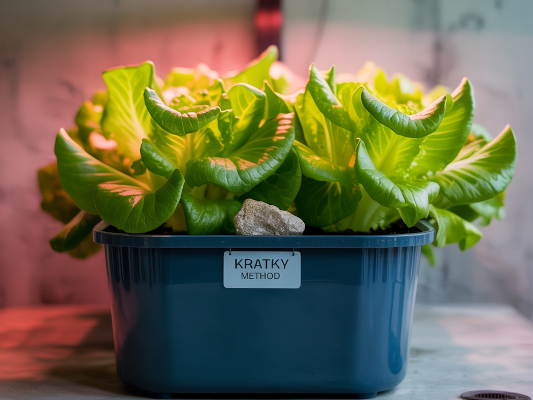At its core, hydroponics is the art of growing plants without soil. Instead of searching for nutrients in the earth, a plant's roots are given a nutrient-rich water solution that provides everything it needs to thrive.
In traditional gardening, you trade control for the forgiveness of soil. In hydroponics, you trade the forgiveness of soil for absolute control over the plant's environment. This guide will teach you how to manage that control to achieve faster growth and higher yields.
While modern hydroponics boomed in the 20th century, the concept is ancient. The Hanging Gardens of Babylon and the floating gardens of the Aztecs both used hydroponic principles. Today, from NASA growing food in space to massive vertical farms, hydroponics is at the forefront of agricultural innovation.
The Four Pillars of Hydroponics
Since there's no soil, we must provide all the minerals (plant food) directly in the water. Mastering this is the key to success.
- pH (The Gatekeeper): Think of pH as the key that unlocks the food. If the pH is wrong, your plant can't eat, even if the food is there.
- EC/Nutrients (The Meal): This measures how much 'food' is in the water. Too much burns the plant; too little starves it.

Plants need light for photosynthesis, the process of converting light into energy. While a sunny windowsill can work for some simple herbs, it's often not enough for robust growth.
A dedicated grow light gives you control over the "day length" and light intensity, allowing you to give your plants the perfect amount of energy for every stage of their life.
This is the most overlooked concept for beginners. Plant roots require oxygen to survive. In soil, they find it in tiny air pockets. In water, we have to provide it.
If roots sit in stagnant, un-oxygenated water, they will drown and develop Root Rot, the #1 killer of hydroponic plants. This is why systems that actively aerate the water are so effective.
Without soil to anchor them, plants need something to hold them in place. This is the job of a grow medium.
Unlike soil, a grow medium is inert—it contains no nutrients. Its only job is to provide physical stability for the plant and give the roots a structure to hold on to as they grow down into the nutrient solution.
The 5-Minute Reality Check
Before you buy a single piece of equipment, let's set some expectations. Answering these questions will save you time, money, and frustration.
You don't need a warehouse. You can start with a single plant in a mason jar on your countertop, a small tent in a closet, or a few buckets on a balcony. Decide on your space first, as this will determine the size and type of system you can use.
This is not a "set it and forget it" hobby. You will need to check on your plants and your system's pH/EC levels daily or every few days. It's a rewarding routine, but it requires consistent attention and patience.
Your first countertop lettuce will be the best, most satisfying salad you've ever eaten. It will not, however, feed a family of four. Start small, manage your expectations, and celebrate your first successful harvest, no matter the size!
Putting It All Together: Your First System
Now that you understand the pillars, choosing a system is simple. For a beginner, we recommend these two systems because they are a direct application of these principles, low-cost, and provide a great learning experience.


Your Beginner's Shopping List
Build your own starter kit by selecting items below, or choose one of our pre-configured kits further down.
Please Note
Please log in to request a quote.
Login or Sign UpStarter Kit Quote Request
Choose a pre-configured kit to get up and running quickly.
Please log in to request a quote.
Login or Sign UpNext Step: Start Your First Grow!
The best way to learn is by doing. For your first project, choose a plant that is fast-growing and forgiving like Lettuce or Basil. Our Plant Guide has many great beginner options.